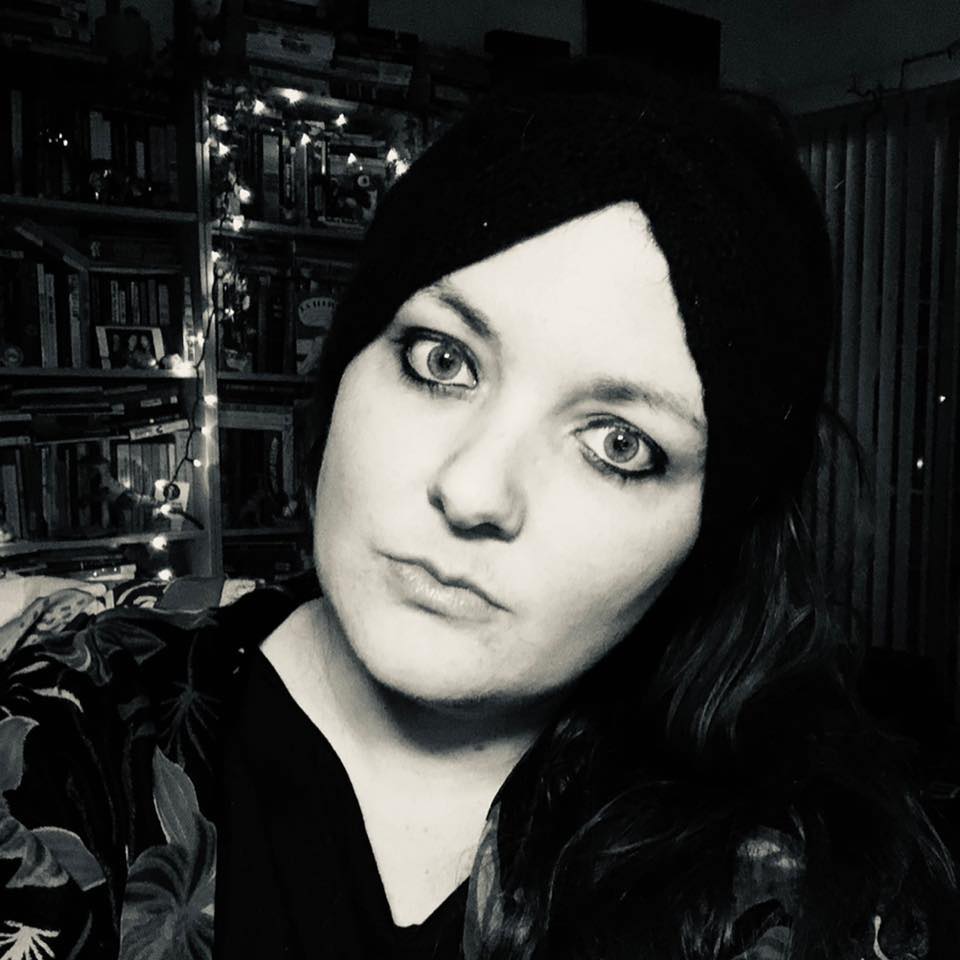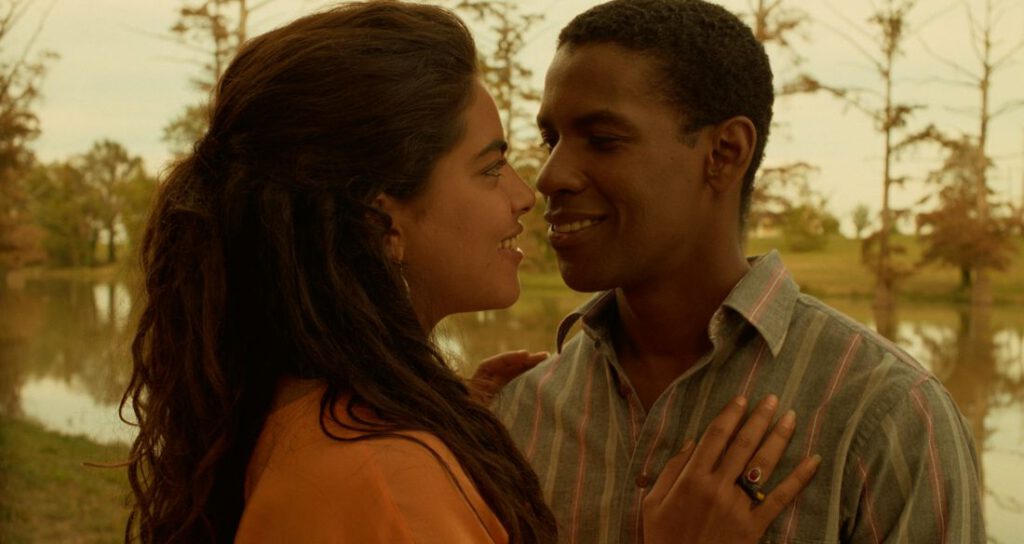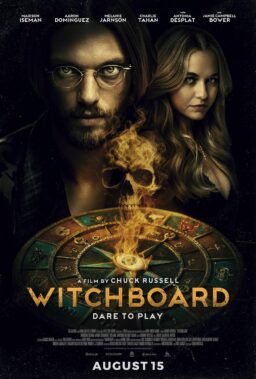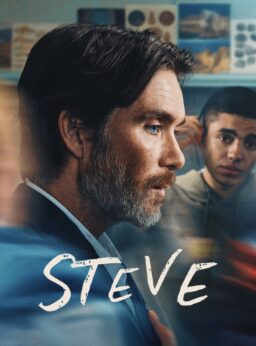Coming off of the success of her feature film debut “Salaam Bombay!”, which was nominated for the Best International Film Oscar and won the Caméra d’Or at the Cannes Film Festival, director Mira Nair followed up with the interracial romance “Mississippi Masala.” Starring a newly Oscar-winning Denzel Washington and Sarita Choudhury in her feature film debut, Nair and screenwriter Sooni Taraporevala explore intersecting ideas about race and home as seen through the romance between a Black American and an Uganda-Indian exile living in Mississippi. Set against Edward Lachman’s vibrant cinematography, Washington and Choudhury’s chemistry scorches the screen, while Roshan Seth’s soulful performance gives a bittersweet depth to the film.
Although lauded at the time of its release in 1991, the rights for “Mississippi Masala” became tangled over the years causing the film to go out of print on DVD and languish in relative obscurity because of its unavailability. That is until Nair sought to regain the rights to the film and Janus Films stepped in for a gorgeous 4K restoration, which debuted at the New York Film Festival in 2021. Now playing in theaters across the U.S., the restoration will be released by the Criterion Collection on May 24th.
For this month’s Female Filmmakers in Focus column RogerEbert.com spoke to Nair over Zoom about the restoration process, casting its two sizzling leads, and how making “Mississippi Masala” unexpectedly changed her life forever.

When I first saw “Mississippi Masala” I had to watch a really terrible rip on YouTube. This was about seven years ago and that was the only way it was available. I saw the beautiful restoration at the New York Film Festival and was blown away by how gorgeous it looked. What was the journey to get this restoration off the ground?
The journey to restore it has been really quite surprising and beautiful. In early 2020, I was asked by a British film festival for a print of “Mississippi Masala.” I looked high and low and there was literally nothing to be found until I tracked the last print to a music company in Nashville, Tennessee called SESAC. The film had been financed by Cinecom, an independent film production company based in New York, when it was made. The rights had been sold three times over and ended up with this music company. They were very kind and lent me the print, which went on to win the top prize at the festival, the audience award. All of the sudden it was kind of a hit movie.
I thought about it, and then I went back to this company and asked what I can do to get the rights of the film back from them so that I can put it out into the world. They were such fans of my work and they were really generous. It took about six months of legalese to get this happening. Then they transferred the rights to me, as the producer of the film, in their entirety. Then within that same week Criterion—who I love and am great fans of, and who have “Monsoon Wedding” and a few other movies of mine—immediately wanted it. That was what happened.
It took about a year. It was one of those slow burning COVID years, which was the perfect time to get it all done. We sold it to Criterion and Janus. They restored it with me and Ed Lachman who shot the movie. They always do things so lovingly. Then the New York Film Festival just immediately wanted it to be in their revival section. About 1,000 people saw it that night and it was amazing. And now it’s back in theaters around the country, which is equally exciting. The fact that kids like you, young people are really going to see this in theaters, this film that was radical then and is I think more radical now is wonderful for me.
A big conversation in film culture right now is the lack of sex scenes in films. Part of what is still so hot about this movie is that phone call scene. There’s something really erotic about that scene even though barely any skin is shown. It’s not really a traditional sex scene. How did you how first envision that scene and why do you think something like that is still so much more erotic than a lot of what’s happening in cinema today?
The phone call scene is about longing. Desperate, urgent longing, It’s also about not being together with the person so that you’re in your own universe. In your longing and in your own universe, you are uncensored because no one is watching, except me with my camera. I also was very much in a stupor of love myself for the first time, while I was making this film. I fell in love. He was in Uganda and I was always somewhere else. So I was definitely experientially in that long distance love stuff.
But more than anything, I love that people really reveal themselves and their hearts and their longing when they’re alone. Because I had this beautiful relationship with both Denzel and Sarita, they could really be open and they really were transparent about that longing. I had always seen it like a split screen with the two of them. I did share a very direct and candid relationship with them, to tell them exactly what I needed and what I wanted. They were so trustful and gave me that generosity. And you’re right, that Eros is not about nakedness. Eros is about what is not revealed. That is Eros. That’s what I went for. Not that it was in any way coy. But the fact is, it’s not about looking hard and doing this. They were in bloody T-shirts, you know? It was the anonymity of the phone. There was no FaceTime. It was just the phone you had to seduce.

When you introduce Mina (Sarita Choudhury), she sort of flips her hair up into the screen, kind of like Rita Hayworth in “Gilda.” Was that a conscious reference?
I didn’t even know about “Gilda” at the time. My reference was simply Sarita’s own hair, which was this wild mane. I love it. I don’t think she possesses a brush or a comb. She was just like that, and she still is. It was conceived, a little bit, as a screen wipe actually. That curtain rising on this fierce, lovely character. That was how it was conceived. Also the fact that she’s not what you think we are like. She just literally doesn’t care. What I loved about her was her lack of vanity. She has not a vain bone in her body, that girl. That really reads on the face. It’s not about the look at all. It’s about the fire.
You told a great story at NYFF about how you ended up casting Sarita. Could you share that?
I saw a picture of her on a bicycle. A ratty little picture with this wild hair and I just loved her look. So I asked my casting director Susie Figgis specifically to find her. She was a film student, she was studying film. Not to be an actor, but theory. She was supposed to come to an audition in London. I kept waiting for her because she was the one I wanted and suddenly Susie said we should go have lunch. And I’m thinking No, I gotta wait to see Sarita. So she took me out to lunch. What had happened was Sarita had walked in there with oiled and well combed hair and Susie said, “She likes that wild hair!” She gave her 10£ and said go to the salon, bloody wash your hair, and don’t comb it! That’s why she was taking me to lunch. Sarita walked in after lunch and looked just like I wanted her to look. And I loved her. She was exactly Mina. There was never a question. There was never anyone who came close, I stopped looking immediately.
How did Denzel Washington become involved?
I really always wanted Denzel, who was not a star at the time. He had just made one film at that time, which I had seen called “For Queen and Country.” He loved my first film, which was “Salaam Bombay!,” so he agreed to meet me. When I was telling him the story, he said no one’s going to offer him an Asian-African American story like this. Actors when they like a film they like it also because they can trust the director. I think that’s what happened with “Salaam Bombay!”, but I’m not sure, but I know he really liked it. I always tell people when I teach film, or if I talk to students, that you have no idea where good work, or bad work, will lead you. If I’ve seen your work, that’s the best calling card you have. You never know when it will come back up again in any context. That’s what happened with Denzel. It was only while we were shooting our film that he became a star like he became with an Oscar nomination for “Cry Freedom” and all of that. I have a good eye, I just knew he was going to be a mega star. Sarita too, but the world is slower for people like us.
I was always surprised that she wasn’t a bigger star because she’s in so many great films in the ’90s. And she’s obviously gorgeous. It really shows the double standard when someone that gorgeous and that talented is just now sort of breaking out for a broader audience.
Yeah, exactly. People are waking up and finally smelling the roses.

How did you come to set the dynamic of this film between South Asian immigrants and Black Americans?
The story was born out of several things. Initially, the genesis of the story for me, before I talked to Sooni Taraporevala about writing it, was being a brown kid between Black and white at Harvard, where I came to college for the first time leaving India when I was 18. I wanted to tell some story about what I call the hierarchy of color and being in between. I looked for situations in the world to hang my hat on and found it in the Asian exile from Uganda to Mississippi and also this remarkable thing that was happening where Indians were owning all the motels in this city. So I thought what if these two communities as they already are get together, and someone crosses the border. What was interesting to me was the commonality. These were Ugandan Indians, who had never known India, who had only known Africa as home, coming to Mississippi, which was the birthplace of the civil rights movement, and in an African American community of people who had never known Africa as home. What if somebody challenges that border and crosses the border with love. That was one premise.
We interviewed 2,000 Ugandan Asian exiles. I personally went to Mississippi and asked Sooni to join me after my first trip. We drove around and lived in motels and met so many characters. We actually had a car collision, just like in the movie, and other things happened that informed our story. Then we realized that we’d never actually been to the African continent. We’d never been to this place, which was a dream for these exiles in Uganda. So we decided to go there. It changed my life forever. Because when I went there, I met this man whose book I had read about the expulsion, and who is now my husband of 32 years. That is our home in Uganda, and that’s where our son was born. We have layers of history, and the film school and everything, right there, all these years later. In retrospect, that totally changed my life. I was nominated for the Oscar for my first film “Salaam Bombay!”. I was supposed to be heading to Los Angeles, not to war-torn Uganda where I didn’t have a telephone for three years. That’s life. It was really like that. But it’s a beautiful life. A rich life.
I love that you mentioned home just now because I noticed in the film, especially at the beginning, but really throughout, there’s a lot of discussions about what is home and who can call a place home and whether home is a feeling or a place. In the end, I think everyone comes to the idea that home is being with people you love. Did your own feelings about the concept of home make it into the film?
That is what I make films about. Not only that, but when you are a child who lives on that seesaw, between worlds as I have from the age of 18 on, then you have to navigate what is home. I’m grateful for the fact that because my roots are strong I can fly on the seesaw because I know where I come from in an essential sense. We actively have three homes. One in New York City, which is very much a creative home and a real home in that my little family, all of us, my husband, son and me, all of us have engaged lives there. We were educated there. We have creative communities there. But we live in Uganda very much. So for me, it’s also a question of engagement.
I plant trees, and I’m a guerrilla planter, I just plant trees everywhere, on the Nile and on the highways. Everywhere. But I’ve also had this film school there for 16 years, Maisha, which is still there to help foster East African filmmakers. When you start engaging with where you are, then it’s home. I really feel that way. But there is also something very powerful where I am now, which is my home in Delhi, where my family is. My mother and my brothers and my extended family are all here. The weather alone, which is how the weather was when I grew up, the hot climate and the rains. There’s something about this that makes me know I’m home because it’s in my bones. I am lucky that I’ve managed to have three homes, but I guess as I get older, I’m feeling more and more at home right here in Delhi although I’m fully engaged elsewhere. It’s a complicated thing. Many of my films are about this idea: What is home and how do we make that home? How do we make the world home for us?

I love that. I’m a bit of a vagabond myself. I’ve lived in many different cities over the years, but my hometown is still home. You’ve spoken about how representation should be more than emblematic. How do you think you have pushed representation?
Besides being marginalized or put to the side by the mainstream media, there is a temptation, either to be seen as exotic or to be creating the exotic. And we ain’t exotic baby, we are just like you. Everybody comes with a layered history and a culture of some kind that shapes who we are and what we believe in and how we speak. It’s our music and our dreams and our poetry that are shaped by the world and by the culture. I have always strived to not melt into the melting pot because I have something distinctive that you don’t have, just like you have something distinctive that I don’t have. Why do we have to conform and become like each other?
If I did that in my films you wouldn’t be talking to me right now. If I went straight from Harvard to Los Angeles, and knocked on the alumni doors and said, hey, I want to make those rom coms. I want to make films about white folks meeting in a cafe saying I’d have what she’s having. I could probably have done that. But I didn’t want to do that because if we don’t tell our own stories, no one else will. I can tell a certain story that you probably can’t tell. The goal is to find the language and find the vocabulary to raise your craft, and to be the best person to do it. That’s what I always have sort of sought to do. I’m not interested in being on the A list. At that time I was interested in making my own list. I never thought there was a great loneliness to that, because you were neither here nor there, anywhere or everywhere.
I made my first film “Salaam Bombay!” and it was an indie. I was in street patois. In India itself, movies had a high handed language, not that street language that I was making the film in and, and certainly not with street kids playing themselves, with a few smattering of actors. I was out there. In New York, where I was cutting the film, I was saving money and sharing a 24-hour editing room with my good friend, Spike Lee. He was cutting “She’s Gotta Have It” and I was cutting “Salaam Bombay!”. “She’s Gotta Have It” became a great success. It was great for him. I was so happy. But I told myself, I can’t have that same success, because I’ve made a Hindi film made with street kids in India. Who will understand me here?
But then it did work. It did speak to people, and certainly at home it did, and abroad. We got nominated for an Oscar. It went the whole nine yards. We won the Camera d’Or. I really believe that if you make the local, as extraordinary as it is, then it becomes universal. Because the world is not a different place in each place. You know? I don’t know if I’m saying that right. People will say the world of “Salaam Bombay!” … it’s in Brazil. It’s In Colombia. It’s in Ukraine. It’s Romania. It’s everywhere. These street kids that need to live and survive. The language of struggle is different in each place, but the feeling is universal. I’ve spent my career pursuing what makes my blood go faster, my heartbeat go faster. That’s one thing I can feel good about, that I have not sought to belong.
Are there any other women directors you think filmgoers should seek out or that maybe they have not heard of whose work you think they should get to know?
So many! I would recommend from India, a wonderful woman filmmaker named Zoya Akhtar. A fantastic filmmaker. “Gully Boy” is one of her great films. I would, of course, recommend Lucrecia Martel, who’s just a genius and somebody you won’t see that easily unless you look for her. The worlds that she seeks are amazing. Lynne Ramsay is a big inspiration for me, as well as Jane Campion. Jane is a friend and she’s given us so much of her idiosyncrasy and her skill and her beauty. It’s great that the world recognizes her today. There are so many. I still have a very soft spot for Maya Deren’s film “Meshes of the Afternoon.” Julie Dash, who made the great “Daughters of the Dust.” These are the folks currently on my radar. They are so powerful and personally themselves in what they seek to do that it gives us all courage. People are waking up to us. It’s late in life but I’m welcoming any embrace. “Mississippi Masala” was a radical and beautiful film 31 years ago, and it did play very well at that time. But it was not equal. We were not heralded in the same way as men were. I never have said that before. But I do feel that because it’s true.
Thankfully we’re in a place, I think, where it’s changing. I can feel a real change happening.
Definitely changing and you are changing it. We are changing it. Young women like you are waking up to the fact that there were always these movies. The door was not shut. I was considered successful. But the heralding was reserved for the men. It’s great to see that sentiment go out the window.
The 4K restoration of “Mississippi Masala” is now playing in select theaters, and will be released by the Criterion Collection on May 24th.












